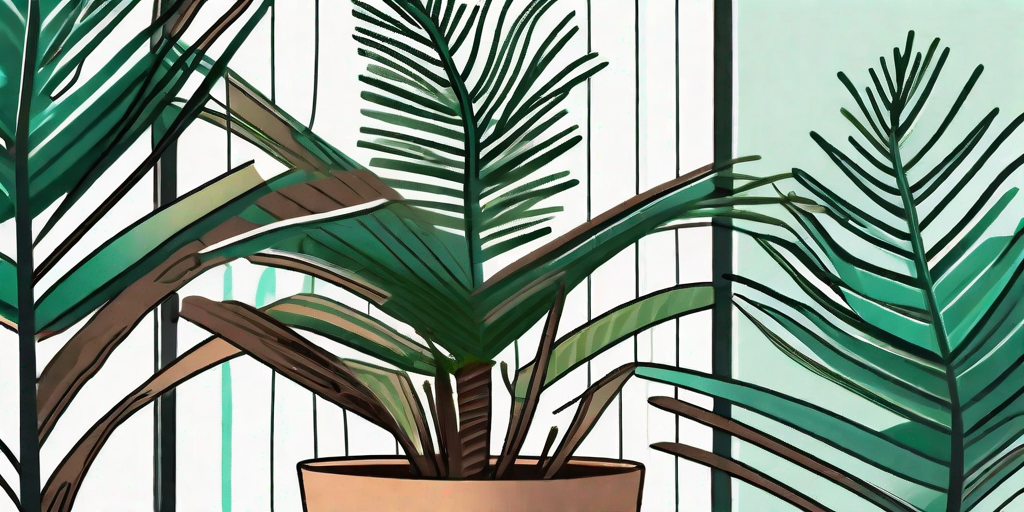
Ah, the Norfolk Pine. A majestic plant that can add a touch of greenery to your home or office. But what happens when your beloved plant starts to look a bit...well, less than lively? Fear not, plant enthusiasts! This guide is here to provide you with all the tips and tricks you need to bring your Norfolk Pine back to life.
Understanding Your Norfolk Pine
Before we dive into the rescue mission, it's essential to understand what we're dealing with. The Norfolk Pine, also known as Araucaria heterophylla, is not actually a pine at all. It's a tropical plant native to Norfolk Island, located between Australia and New Zealand. So, if you've been treating it like your typical Christmas tree, that might be where you're going wrong.
These plants are known for their symmetrical branches and soft, needle-like leaves. They can grow up to 200 feet in their natural habitat, but don't worry, in your living room, they'll usually max out at about 6 feet. Now that we've got the basics down, let's move on to the revival process.
Diagnosing the Problem
Like any good plant doctor, the first step is to diagnose the problem. Is your Norfolk Pine turning brown? Dropping needles? Not growing? Let's break down some common issues and their solutions.
Browning Needles
If your Norfolk Pine's needles are turning brown, it could be due to a few reasons. The most common culprit is underwatering. These plants love moisture, and not getting enough can cause them to dry out and turn brown. But be careful, overwatering can also cause browning. It's all about finding that sweet spot.
Another reason could be low humidity. Remember, these are tropical plants. They thrive in high humidity environments. If your home is too dry, it could be causing your plant's needles to brown.
Dropping Needles
Are you finding more needles on the floor than on your plant? This could be due to a sudden change in temperature or light. Norfolk Pines are sensitive to change and prefer a stable environment. If you've recently moved your plant or there's been a sudden weather change, this could be the cause.
Another reason could be root rot, caused by overwatering. If the roots are constantly wet, they can start to rot, causing the plant to drop needles. So, remember to let the soil dry out between waterings.
Reviving Your Norfolk Pine
Now that we've diagnosed the problem, let's get to the fun part - reviving your plant. Here are some step-by-step instructions to bring your Norfolk Pine back to life.
-
Check the soil: Make sure it's well-draining. If the soil is too compact, it can hold too much water and cause root rot. Consider repotting your plant with fresh, well-draining soil.
-
Water correctly: Water your plant thoroughly, then let the soil dry out before watering again. Remember, it's better to underwater than overwater.
-
Humidity is key: Increase the humidity around your plant. You can do this by misting the leaves, placing a tray of water near the plant, or using a humidifier.
-
Stable environment: Try to keep your plant in a stable environment with consistent light and temperature. Avoid placing it near drafts or heaters.
Preventing Future Problems
Now that your Norfolk Pine is back to its glorious self, let's make sure it stays that way. Here are some tips to prevent future problems.
-
Regularly check your plant for signs of distress, such as browning needles or slow growth.
-
Stick to a consistent watering schedule. Remember, let the soil dry out between waterings.
-
Maintain a high humidity environment. Your Norfolk Pine will thank you for it.
-
Keep your plant in a stable environment. Avoid sudden changes in light or temperature.
Frequently Asked Questions
Still have questions? No worries! Here are some frequently asked questions about reviving a Norfolk Pine.
Can a dead Norfolk Pine be revived?
It depends on how far gone it is. If the trunk is still green, there's a chance you can revive it. But if the trunk is brown and the needles are all fallen, it might be time to say goodbye.
How often should I water my Norfolk Pine?
There's no set schedule, as it depends on the environment. But a good rule of thumb is to water thoroughly, then let the soil dry out before watering again.
Does my Norfolk Pine need direct sunlight?
No, Norfolk Pines prefer bright, indirect light. Too much direct sunlight can scorch the needles.
So there you have it, folks! With a little love, care, and a sense of humor, you can bring your Norfolk Pine back from the brink. Remember, plant care is a journey, not a destination. Happy growing!















